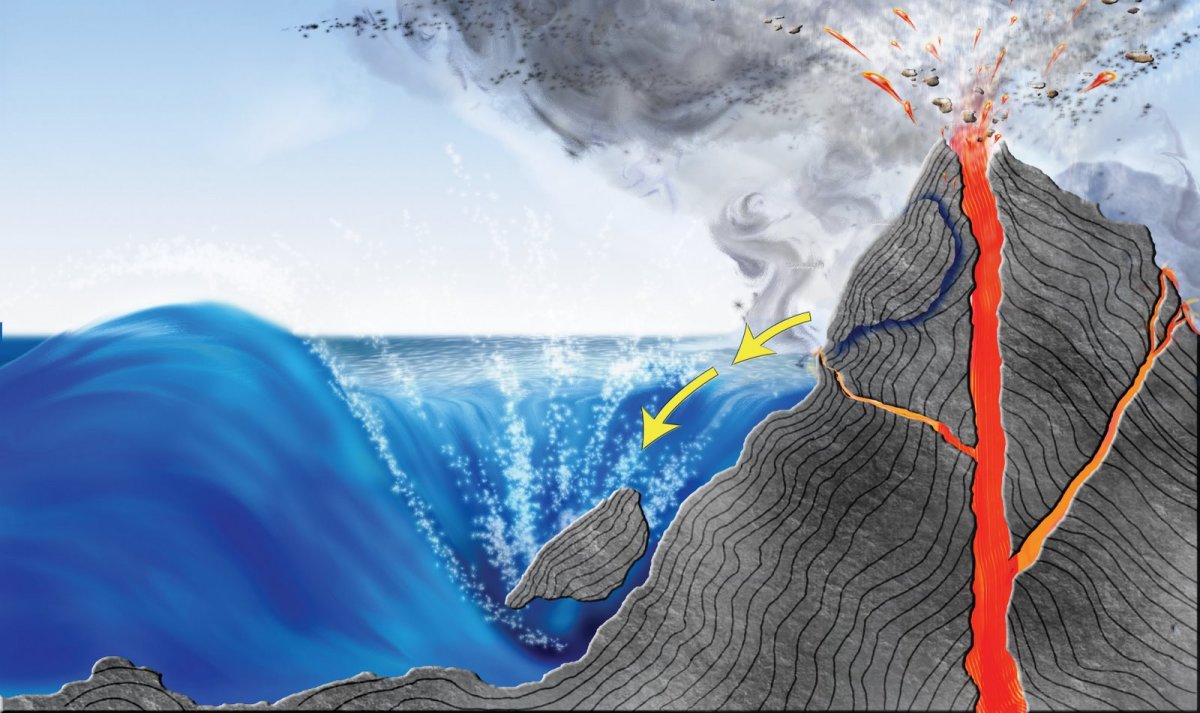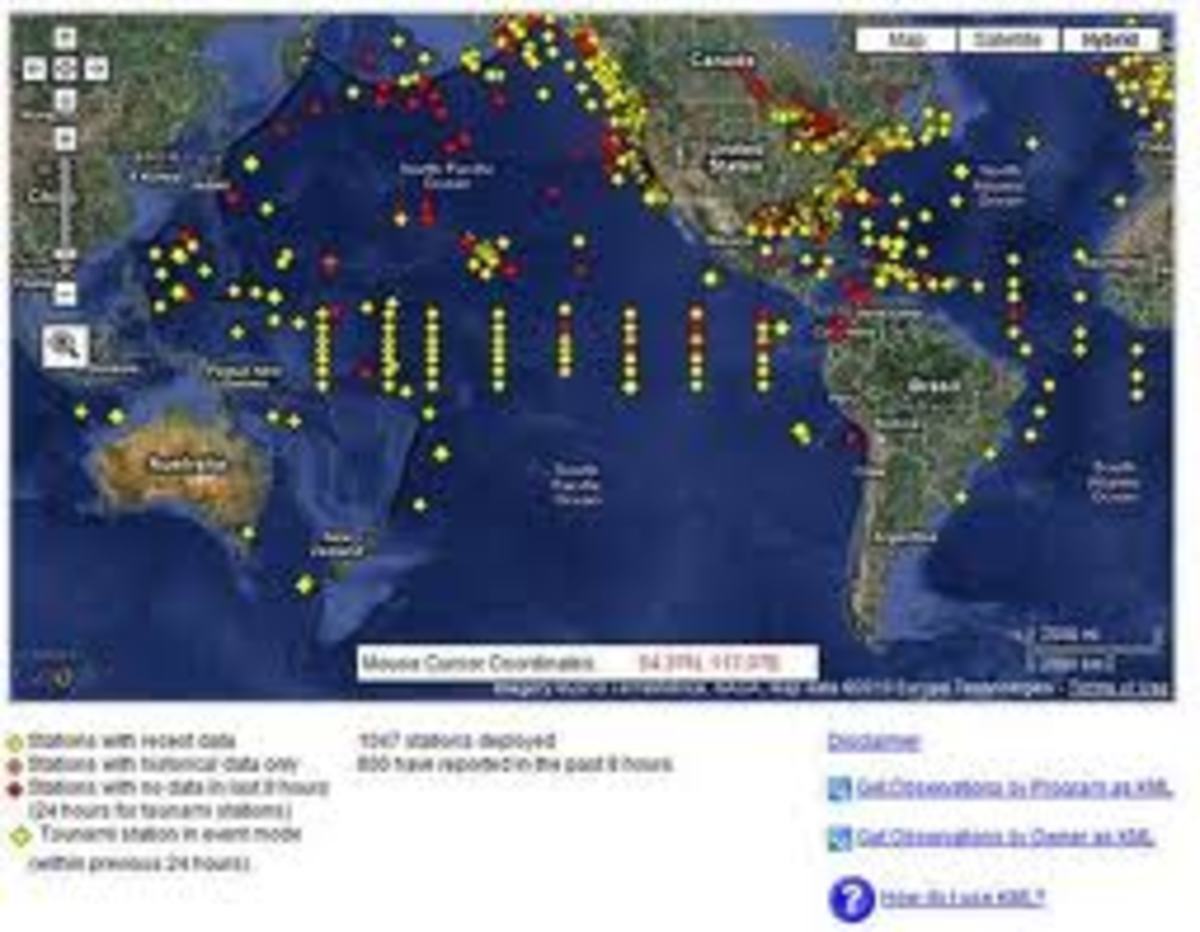Earthquake Review-Forecast (4th Quarter of 2016)
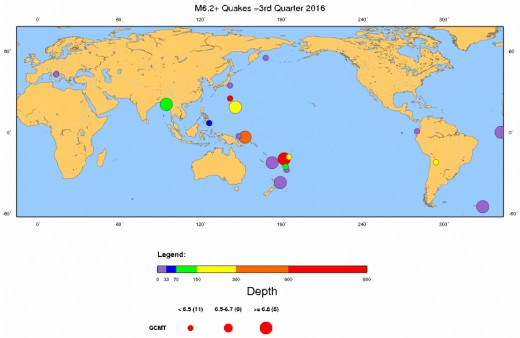
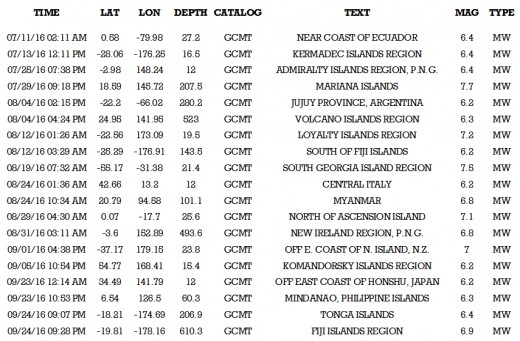
Reviewing the Last Three Months (since my last hub)
The 3rd quarter of 2016 started off slow. The last month of the 2nd quarter and the 1st month of the 3rd quarter were about the same. With one glaring exception, they both did not have any 6.8 magnitude or larger earthquakes, until near the end of July, when a 7.7 magnitude event occurred in the Mariana Islands. That quake seemed to set off a worldwide flurry of magnitude 6.8 or larger earthquakes during August, which had 2.5 times more than the average (it would be 3.1 times more if you count the two big quakes just before and after August as well; 7 quakes total when normally there should be 2.25 in a 34 day period).
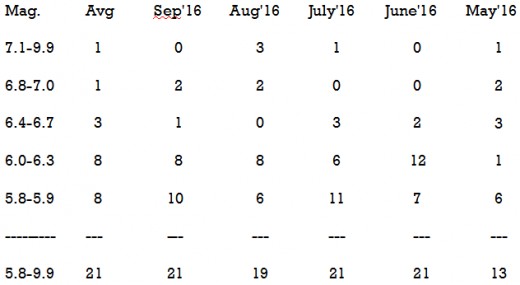
Although, what is forecast in these reports are earthquakes of at least 6.8 magnitude, and referred to as significant, it is no less significant when, such as happened in the early morning hours of 24 August, a 6.2 magnitude event occurred, taking the lives of nearly 300 people in central Italy. It should be noted, that during heightened worldwide activity, what is considered significant magnitude wise is lowered below the usual minimum. August was an exception for what has turned out to be quite a few months of average activity. September returned to that trend, but I am expecting things to begin to pick up speed in the last quarter of the year.
If anyone would like to take a look at my last forecast, for the 3rd quarter of 2016, they can see that I forecast low activity likely for most of July, with things picking up as early as late in that month, lasting through much of August, and then dipping back down into average activity for September.
September had a few surprises however. It started off with a 7.0 magnitude event in New Zealand (that quake probably the last of the series of worldwide quakes of at least 6.8 magnitude that followed the 7.7 quake near the end of July. Not long after that New Zealand earthquake, Oklahoma had their biggest quake on record at 5.8 magnitude, beating the previous record holder of November 2011. Significant events then slowed down until the 24th of September.
At that time, the start of a new, perhaps slower starting trend upward may be represented by the double quake that occurred in the Tonga (magnitude 6.4 event) and Fiji islands region (6.9 magnitude event). The two were separated by just 21.5 minutes of time and 800 kilometers in distance.
Those two quakes were also separated by depth, the first smaller quake occurring at just over 200kms below the surface of the earth and the second larger event happening just over 600kms deep. What makes this interesting is that there was a distance of about 800kms horizontally and 400kms vertically between these two quakes so it would seem doubtful that the first, smaller quake set off the second one. Some effect outside of the two appeared to parallel their occurrence. Could that be astrology? At the time of the first quake, Astro-Aspect values were above their base line (long term average) and were just 0.1 point below it at the time of the second seismic event.
While the 3 months that closed at the end of September, 2016, was more average than above in activity—average for the first and last month, while August was about 2 to 3 times busier than usual for earthquakes of at least 6.8 magnitude—it looks like activity will be up at least 1/3rd more for the last quarter of 2016, than it was for the 3rd quarter. In other words, I would expect at least 2 months of above average activity, with only one (or no) month(s) being average. This trend should continue into the next year with activity becoming even more noticeably busy. Now for the forecast for the last 3 months of 2016:
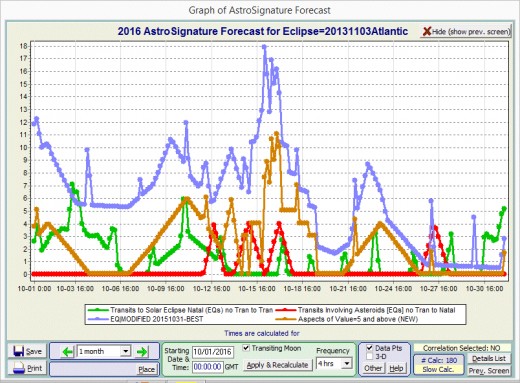
You May Want to Fasten Your Seat Belt (It Could be a Bumpy Ride)
As early as the 1st of the month of October and lasting a bit over 3 weeks, activity should be at least slightly above average seismically. There is then a gap of about close to 3 weeks where only random events should occur and thus be no better than average (barring a possible exceptional influence mentioned at the end of this article). The most likely date for a big quake this month is 16 October at 0700UT (±36hrs). What makes this period in time particularly risky is a full moon on 15 October at about 0430UT when the moon is also at perigee. Possible epicenter locations at that time would be Africa, Madagascar, or Java. Here is the complete list of dates and times to watch for in October (the windows as defined by Astro-Aspect values comes to 11.2 days or 36% of the month):
1 October, 0000UT – 2 October, 0800UT (32hrs)
3 October, 0800UT – 4 October, 1200UT (28hrs)
9 October, 1600UT – 12 October, 1600UT (72hrs)
13 October, 1600UT – 17 October, 1600UT (96hrs)
22 October, 1600UT – 24 October, 0800UT (40hrs)
Possible epicenter locations for the month of October are: Africa, Dominican Republic, Colombia/Venezuela area of South America, Madagascar, and Java.
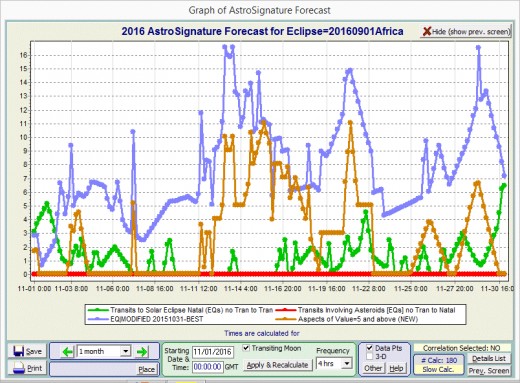
If October Wasn't Active Enough...
The first 12 days of November 2016, should be no better than average, with either one (or no) earthquake(s) occurring in the 6.8 magnitude or larger range (in other words, random, or with no astrological influences unless Mars plays a role heliocentrically as mentioned at the end of this article). The date to look out for during the month will be 21 November at 1200UT (±24hrs). Not to be overlooked though is a full moon almost exactly one week before this, at 1350UT on 14 November, when the moon is pretty much as close and as speedy in motion as it gets (if this triggers anything it is likely to be before rather than after it is exact). Possible locations for the 14 November date would be Japan, the Aleutian Islands, or the west coast of the U.S. For the 21 November date, again, likely epicenter locations will be Africa, Madagascar, or Java. What follows is the complete list of dates and times to watch for in November (the windows as defined by Astro-Aspect values comes to 7.75 days or 26% of the month):
13 November, 0000UT – 16 November, 0000UT (72hrs)
20 November, 0600UT – 22 November, 0600UT (48hrs)
28 November, 0600UT – 30 November, 2399UT (66hrs)
Possible epicenter locations for the month of November are: Japan, Aleutian Islands, the west coast of the U.S., Taiwan, Africa, Madagascar, and Java.

December May Feature a Different Kind of Rockin Around the Xmas Tree
In theory, December should be a pretty active month, especially on or around the 25th of December (peaking at 0930UT ±24hrs). Possible epicenter locations to watch at that time would be Taiwan, the west coast of the U.S., Papua New Guinea, the Solomon Islands, or Australia. Here is the complete list of dates and times to watch for in December (the windows as defined by Astro-Aspect values comes to 13.6 days or 44% of the month):
2 December, 2000UT – 3 December, 0800UT (12hrs)
4 December, 1200UT – 5 December, 0000UT (12hrs)
10 December, 0600UT – 16 December, 1200UT (150hrs)
19 December, 0400UT – 20 December, 0000UT (20hrs)
21 December, 0600UT – 22 December, 0600UT (24hrs)
24 December, 1200UT – 27 December, 1200UT (72hrs)
29 December, 0800UT – 30 December, 2000UT (36hrs)
Possible epicenter locations for the month of December are: Taiwan, west coast of the U.S., Papua New Guinea, the Solomon Islands, Australia, Japan, the Aleutian Islands, Java, Hawaii, the Philippines, Indonesia (including the west half of New Guinea).
And Finally, If This Hub Didn't Concern You Enough...
One final note before closing.. Recent research of mine has shown that the heliocentric positions of Mars in relation to the Sun can indicate days of very large earthquakes when Mars is at perihelion (closest to the Sun in its orbit) or conjunct its ascending or descending nodes (north or south nodes, when it is crossing the plane of the ecliptic). The effect of when Mars is at or near its perihelion point, should last from early October to late November of 2016. As a result, I would not be surprised to see (even the period outside of my windows when normally only random events would occur) at least one earthquake of at least magnitude 7.3 during this time and likely one much larger than that. Some examples of earthquakes that resulted during such periods of time were the 4 November 1952 Kamchatka earthquake (8.9Mw), the Chile earthquake of 22 May 1960 (9.55Mw), and the Japanese earthquake of 11 March 2011 (9.0Mw).
© 2016 Joseph Ritrovato






